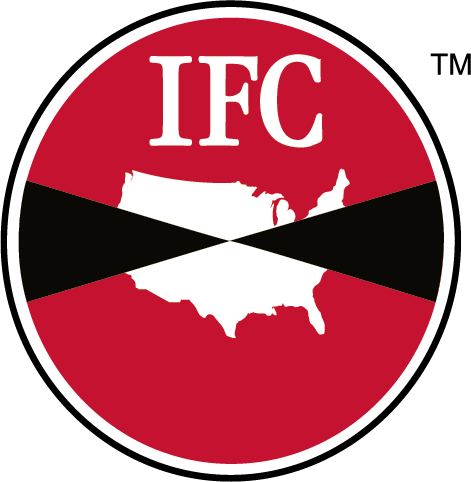Flies comprise one of the largest orders of insects with tremendous diversity, as well as economic and human health importance. They’re a perennial pest that seem to be increasing in prominence, and for food processors, their presence can be devastating to audit scores and bottom lines. It’s important for processors to understand the difference between fly species so that they can more quickly solve the issue at hand. Whether the flies are small or large, here’s what your pest management professional is looking out for:
SMALL FLIES, BIG PROBLEMS
While the size of the flies you’re dealing with might not be your first concern, it’s certainly a defining factor from a pest management perspective. While large flies usually enter food plants as incidental invaders, small flies more commonly develop inside the plant, pointing to a larger sanitation issue. Small flies can carry pathogens from surface to surface, making their bodies more probable food contaminants than large flies. Small fly issues that have escalated to recognized problem status are more common in the industry than large fly issues. Getting to the source and correcting small fly issues is often a difficult sanitation and facility operational challenge, so identifying the fly at hand can point to the specifics of its habitat and source.
Fruit Flies
Fruit flies are the most common of the small flies with a special fondness for sugary, malty or vinegar-type materials. Soft drink dispensers, beer taps, over-ripe fruit or fruit wastes, trash containers or vending machines with product residues are often hot spots. Think also of bottling processing or packaging lines for certain products that allow a little sugary material to fall into mechanical parts. Soon something goes sour and if it has not attracted flies yet, it eventually will. The most familiar fruit fly in these conditions has been a little tan or gray fly with red eyes: Drosophila melanogaster. If the source of activity is not obvious, there are fruit fly traps to help control and monitor, or small shallow containers with an attractive fluid could be simple monitors to help zero in on a source. Another increasingly important type, D. replete, is a little larger and has dark eyes. These dark-eyed types are associated with more advanced decomposition of organic materials in cracks, crevices, drains, etc.
Phorid Flies
Phorid flies have a distinctive humped back posture and small head. Phorid flies likely have the greatest diversity of food source opportunities – and food safety threats – among the small flies in the food industry by infesting everything from food wastes, sewage, dead animals, feces and other moist organic materials. Phorid flies have the remarkable ability to locate and infest resources deep underground, then completing multiple generations of development underground in contaminated soil surrounding broken drain lines. Wash water or mops that continually feed organic material into cracks and crevices can create a great habitat for phorid flies. Broken drain lines under the floors of food plants are surprisingly common. When phorid flies become a problem associated with broken drain lines, the only solution is to jackhammer the floor, repair the drain and remove and replace the contaminated soil.
Drain Flies
Drain flies are distinctive and fuzzy little flies that some might confuse with a moth. These are a rather specialized fly associated with slime on the interior of drains, or cracks and crevices that receive regular supplies of wet organic material via wash water or mopping. Drain flies usually occur in small numbers of flies resting on a wall or surface and only move a few feet when disturbed. They are not strong-flying, hovering flies like many others. Monitor suspect drains or sources with glue boards to identify the trouble spots for efficient remedial action.
Small Dung Flies
“Small Dung” or Sphaerocerid flies resemble miniature house flies. Like others, these are associated with moist, decaying organic materials – often drains or wet organic material washed or mopped into cracks or crevices.
LARGE FLIES
If you’re dealing with large flies, you should analyze the characteristics of the invasions. Proper identification may point to the reason for attraction to your facility, since most large flies enter as incidental invaders. There could be an overlap in food preferences, but blow flies tend to be associated with garbage and food wastes while house flies are more associated with manure and other moist organic materials. If large flies are being found indoors regularly during cold seasons, it’s possible the flies could be developing on rotting food sources indoors that need to be searched for and cleaned up. Another regional fly pest in the upper Midwest and Northeast may also be the culprit: cluster flies. These flies are larger and hairier than a house fly or blow fly and are not necessarily attracted to foods or filth, but have gained entry from roof fixtures or other exterior building cracks and crevices to overwinter. They will find their way into the interior throughout the winter and spring, sometimes in very large numbers, and be strongly attracted to sunny windows and light traps.
Once you’ve narrowed down which fly species you’re dealing with, you can start resolving the issue. When it comes to preventing fly issues – small or large – sanitation is always key. Schedule cleaning every seven days or so to disrupt developmental cycles for the most chronic pest species. Periodic physical cleaning action is probably in order for certain processing and packaging equipment, and is also an option for drains. Chemical and probiotic-type cleaners could be useful for certain equipment, cracks and crevices, or drain cleaning. And, as always, consult your pest management professional for help in keeping your facility fly-free and audit ready.


